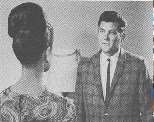Establishing shot – Establishing shots are usually used to open a scene, to define where the scene is taking place. E.g. in ..... there is a establishing shot at the beginning shows ,,,, where the movie takes place.

Aerial shot – Aerial shots give the viewer the eyes of God to either see action from up above or just the setting.

High Angle shot – In some ways similar to some aerial shots but instead are closer to the action. The camera is higher at angle so you can still see the whole person rather than directly above like an aerial shot. High angle shots give the viewer a sense of control as they can see over what is happening. Whether it be control in terms of the point of the storyline, that you know what is going on, or even another character looking down on another having that sense of control over them.

Low angle shot - a low angle shot is opposite to a high angle shot. It takes the shot from an angle below to make the subject look taller or more important. For example in an episode of Coronation Street I watched, Sally made a deal with Patrick(the Bill Guy) and on the hand shake there was a low angle shot from further away, marking as an important part in the episode and also portraying it as quite sinister. It wasn’t an upright shot for everyone to look on and see, the dark and dingy floor took up almost half of the space in the shot, portraying this deal as quite sinister and potentially dangerous. Low angle shots along with a dark lighting can be portrayed as quite mysterious, sinister or dangerous. E.g. The Batman and the high rise building in this picture the dark knight looks quite mysterious in its dark silhouette and night sky.


Other shots we looked at included Wide shots, long shots, medium shots and close ups along with their different dimensions.
Wide shots
– Wide shots are often considered the same as long shots, however with Wide shots you tend to see more of the setting.Whether its seeing a character in their environment or just seeing the setting by itself having a wide shot allows the audience to see the a larger amount of scenery than your standard long shot.

Long shots – Long shots show a whole person in their entirety, with their head near the top of the shot and their legs and feet near the bottom. Long shots are mainly used in order for the audience to focus on what the character is doing. For example in this picture it is clear that we are meant to see the man’s technique as he swings the golf club. In this long two shot of Will Smith and Martin Lawrence from the film Bad Boys the audience can clearly see that they are armed and in a situation where they will possibly have to use the guns they posses. However, although long shots mainly show what the character is doing, we can also see a glimpse of their surroundings. In the golf picture we can see he is on a golf pitch, similarly in the Bad Boys picture we can see part of something on fire in the background showing they are in a dangerous environment in which they have to be armed. (Perhaps in a wide shot you would have seen the whole thing!)
Another dimension of a long shots is
Extra Long shots: Where you see the whole person and what they're doing from a distance. Meaning that their feet and head is not as close to the top and the bottom of the shot.
Mid shots - Mid-shots or Medium shots, is where the shot shows what person and perhaps what their doing in a bit more detail now they are closer. Their head is still near the top of the shot like a long shot, but it cuts off earlier at their legs or waist.
Other dimensions of Medium shots include

Medium Close up shots: This is a cross between a Medium shot and a Close up (hence the name) where the shot cut off higher up on the body. A majority of Medium close ups cut across on the chest, just below the shoulders like this shot from Super 8 or further down the stomach.
Two-shot - A two-shot is basically a mid-shot of two people. It is often used to show the relationship between two people. For example in this shot the woman is slightly leaned into the man, perhaps suggesting she has an interest in him, whether it be caring for him or showing affection. Whatever the interest is it is clear tha the man perhaps isn't as keen, not being as leant forward or maybe he doesn't want to show his interest in public it in public...
Over the shoulder shot - An over the shoulder shot is often used to show conversations, and people reactions during them.
Close up shot - Close ups are use to make the audience pay speacial attention to the subject or person and the expression on their face or detail to whatever the close-up is on.

Extreme close up - ECUs are often used to suggest that there is more than what we see. There is a reason why we don't have the bigger picture...oooh spooky. It is often used in films when there is something secetive, that not everyone in the film knows. It is also used to identify something important and worth remembering as it may be revealed why they used that shot then later in the plot of film.

We looked at other ranges of shots as well and it was inportant for me to remember them when composing our groups shot list and filming them later on. For example we decided to use low angle shots when looking at our victims at some points to belittle them.









